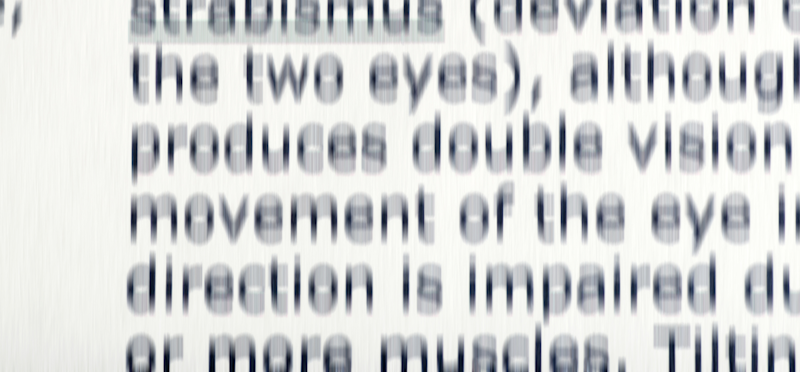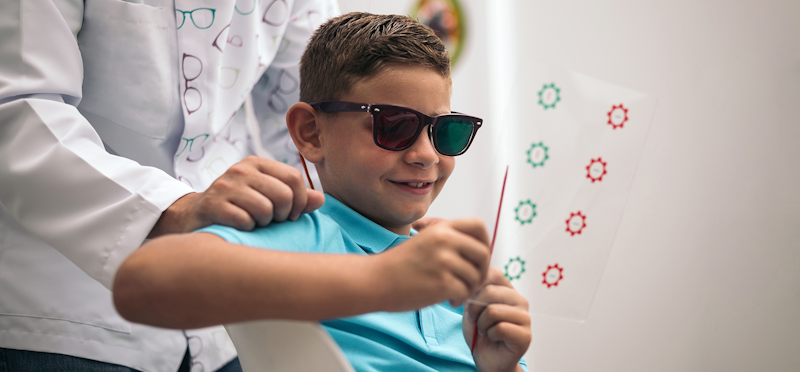Watch your child’s head as he reads. Is he tracking print with his eyes, or does his head move as he reads?
I’ve worked with many children who have been through vision therapy and can finally deal with close-up work like reading print. However, a few of them retained a bad reading habit in spite of attempts to train efficient eye tracking skills in vision therapy. It's more efficient and less stressful to read with eye movements alone and this tip can often help.
The Tracking Problem: A Bad Habit
Although a therapist will probably work on building your child's eye tracking skills during vision therapy, that doesn’t mean that your child will automatically adopt proper eye movements when reading to you at home. He might be so used to either bobbing and weaving while reading, or to just tracking with his head moving side to side, that he reverts to tracking print with head movements instead of eye movements alone, simply out of habit.
The result will be choppy and inaccurate reading. It is far less efficient to track print with head movement than with eye movement. It is also likely that a child using his head to track will read carelessly. That is, he will either miss the common little words like a and the or he will substitute another word instead, due to his having jumped across the word when he moved his head.
The "Cure" for the Bad Habit
Sit across from your child at a table as he reads aloud and watch his eyes and head. His head should be steady and unmoving as his eyes move across each line of print. If this is what is happening, great. However, if you see his head moving slowly, or if he’s bobbing around, then tell him what you’re going to do and reach across and put your hand on the top of his head and steady it. Then have him read a few lines of print.
He is likely, after a short period of adaptation, to start reading both more fluently and more accurately, assuming of course that he’s reading material he’s capable of reading. If you noticed that your child’s reading fluency and accuracy showed a marked improvement when his head was held steady, then you should immediately point out his improved reading so that he realizes that it actually happened. Doing so might convince your child to steady his own head when he’s reading alone. He's not likely to change his behavior if he doesn't realize that he will benefit from the change.
Also, be mindful that this tip might have your child suddenly reading more smoothly but, if he's struggling with a vision skills issue, he could easily revert to his head-tracking behavior.
Summary
While some vision therapy exercises are specifically designed to build eye tracking skill for reading, that doesn’t mean your child will dump his previous habits and begin reading in a more efficient manner. Holding his head steady, and making clear to him that doing so improves his fluency, is one way to get him to more quickly shift to a new, better, method of tracking print by using his eyes alone, rather than his entire head. Note, however, that if your child has poor eye tracking ability, holding his head might only frustrate him further. This tip is about changing a bad habit, not building eye tracking skill.
A Later Note: Eye Tracking and Adults
Frankly, I'd never given much consideration as to how this eye tracking tip would apply to an adult reader, since it's intended for the parents of children who've undergone vision therapy. Then one day I received an email from a gentleman in the UK who claimed that, without realizing it, he had been tracking print by moving his head instead of his eyes. He claimed that as soon as he steadied his head, and began tracking print with his eyes only, that things immediately changed for him. Here's what he wrote:
"Oh, when I said I got an immediate improvement from your technique I was referring to moving the eyes to the text not the head. Up until you suggested this I wasn't jerking my head but I was more like a tennis spectator. Since yesterday, now when I read words they do come in one shot and link together. Yes, it sounds crazy. When you think of it though, we're talking in split seconds so little adjustments do make the difference between catching the meaning or being left behind."
Now I have no idea to what degree his reading ability was affected when he made that simple change, nor even whether he stuck with it. It sounds to me like it improved his comprehension though, and he later claimed that he thought there were likely to be "thousands of adults" who would benefit from making this simple change in their reading habits. I have no idea whether that's true or not, but felt I should at least relay his experience in case some other adults would benefit.




